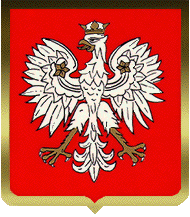Home Page
BIENIASZ
(pronounced: B'YEN-yosh)

Objective:
To re-unite descendants and friends of the widely dispersed Bieniasz Tribe of Southeast Poland.
If you're a Bieniasz, Bieniarz, Bienias', Bieniaszewski, Bieniaszowski, Bienasz, Benasz, Benarz, Bennis, Beanish (Canada), Benas, Bieniacz, Bienierz or Binish --
Who?
Hello and welcome, cousin! This Polish surname now takes many modified forms because it is quite old.The online Polish Encyclopedia, provided by Onet.pl, lists the following surnames as all being related to Benedykt: Benedyk, Benesz, Benik, Bieniasz, Bieniaszek,
Bieniek, Bieniesz, Bienik, Bienisz, and Bien. It also mentions the shortened forms of Benek, Beniek, Benio, and Benus.
What?
The surname is pronounced B'YEN-yosh. It's based on the shortening of the medieval name Bienadykt to "Bieni", then adding the suffix "asz" meaning
related to or kin of. So, it would appear that we are literally "Benny-ish" or "Benny's Kin" --- or in more proper English, perhaps "Benson". In this case, however, the Bienadykt upon which Bieniasz stems was the Benedictine Order headquartered at their monastery at Tyniec near Krakow. The Benedictines ran missions to convert
and educate the heathens, including those at Opatowiec (west of Tarnow) and Pilzno (east of Tarnow), during the period 1000-1300 A.D.
Where?
Our Bieniasz Tribe has its origins in southeast Poland, between Krakow and Lwow, along the ancient trade route that became the old National Highway
and, later, the former Karol Ludwig Railway. Two of the more prominent family "clusters", or clans, come from the area east of Tarnow (Debica Clan) and east
of Rzeszow near Lancut (Rzeszow Clan). Another "cluster", a Bienias' clan, originates a little further south and west in Nowy Targ county (Nowy Targ Clan).
The oldest known references to the surname Bieniasz place the surname northwest of Krakow in 1304 A.D.Later historical documents recorded between 1447-1492 contain several Bieniasz references in the vicinity of Przemysl and Lwow in the 15th Century.
Specifically and in the original Latin, "nobili Benedicto alias Byenyesch" in "Czeschibyessi" near Lwow and "Benedicto alias Byenyasch" in "Leopoliensi",
i.e. Lwow, in 1485. This is evidence that the surname Bieniasz gradually spread eastward along the ancient trade route.
When?
The origin of Bieniasz rests in the murky past somewhere in the period of the 11th-13th Centuries although one source has placed its origin in the 11th Century.
Medieval Polish historian Jan Dlugosz recorded a Bieniasz father and son, a magistrate somewhere in Sieradz Province and a castellan at Konary in Sieradz Province
(and about 12 miles northwest of Czestochowa) respectively, in 1304 A.D. Both Sieradz and Konary lie north of Czestochowa and just outside the traditional
boundaries of historic Malopolska. (Ziemia Sieradzka, the Sieradz region, was officially incorporated into the Kingdom of Poland in 1339 A.D.). Since all of
these places are located to the northwest of Krakow, it infers the subsequent movement of the surname from northwest to southeast as well as the existence
of the surname prior to 1300 A.D. So, somewhere in the general vicinity of Czestochowa or Krakow is where our common Bieniasz progenitor, a quasi-nobleman
of the time associated with the Witkorowski Clan of the noble House of Gryf (Gryfit), likely was to have been. (Supporting documentation)A village named Bieniaszowice was founded west of Zabno (near Tarnow) around 1325 A.D. Later, in 1335 A.D., another Bieniasz was given one-third ownership
of a mill on the outskirts of Krakow by King Casimir the Great. This perhaps further supports an early association with the House of Gryf since the House of Gryf
originated in Branice, a short distance east of Krakow.A member of our family from Bieniaszowice apparently married into the noble House of Grabie and took up responsibilites to the north in Wislica
(today, in Swietokrzyzskie Province but traditionally part of historic Malopolska) in 1398. This branch of the family then began using the surname Bieniaszowscy or Bieniaszowski.And finally, Bazyli Bieniaszewski, of the noble house of Gryf, is recorded as the burgrabiego, a burgrave or count of a fortified town, of Krzemienica near
Lancut in 1703. This establishes that a member of the family had indeed been accepted formally into the House of Gryf and amended the surname to the more
noble-sounding Bieniaszewscy or Bieniaszewski.
How?
We intend to share family information via the internet. Through e-mails and websites such as this, we'll identify the various clans of the Bieniasz Tribe. It is unrealistic
to hope that we will eventually link them all together because the surname is so old and few records have survived from that period. But, we can have fun trying.
More than 100 BIENIASZs (of various spellings) passed through Ellis Island NY in 1892-1924. In 1990 in Poland, there were 54 BIENASs, 201 BIENASZs,
1300 BIENIASZs, 324 BIENIARZs, 3235 BIENIASs, and 121 BIENIAS'. The number of Bieniasz descendants in the United States is unestimated.We are a large family, separated by time and vast distances. In process of being good Americans, Canadians, Australians, Britons and Poles, we've nearly
forgotten who we are --- BIENIASZ!.
Crest of the House of Gryf
Used by the Clans of Wiktorowski and Bieniaszewski
Crest of the House of Grabie
Used by the Clan of Bieniaszowski

For pages exclusive to the family of Stanislaw Bieniarz of Chicago, click here: Bieniarz Family Website
Dennis Benarz, Chicagoland USA 2002-2008
Email: benarz@hotmail.com
